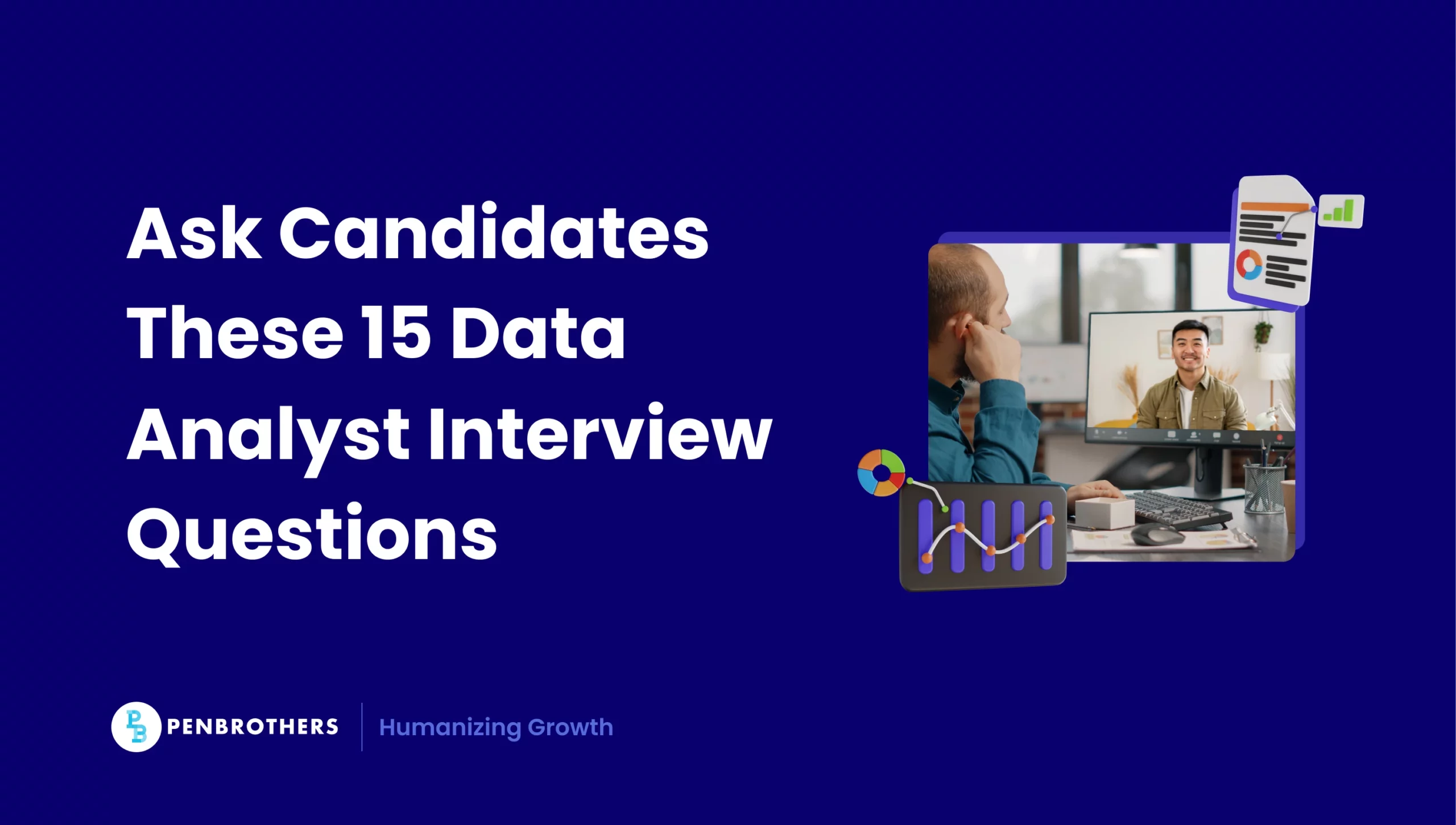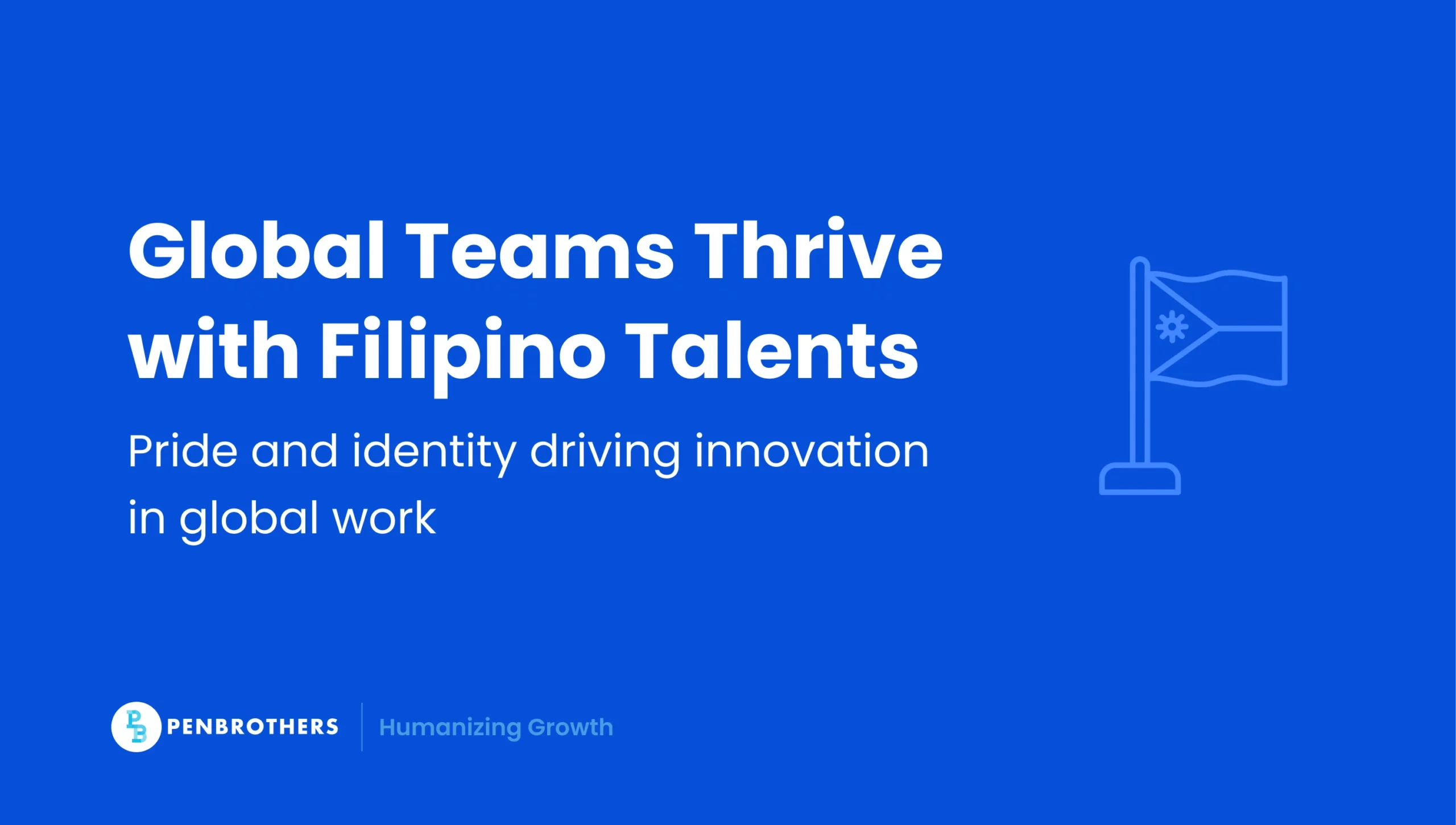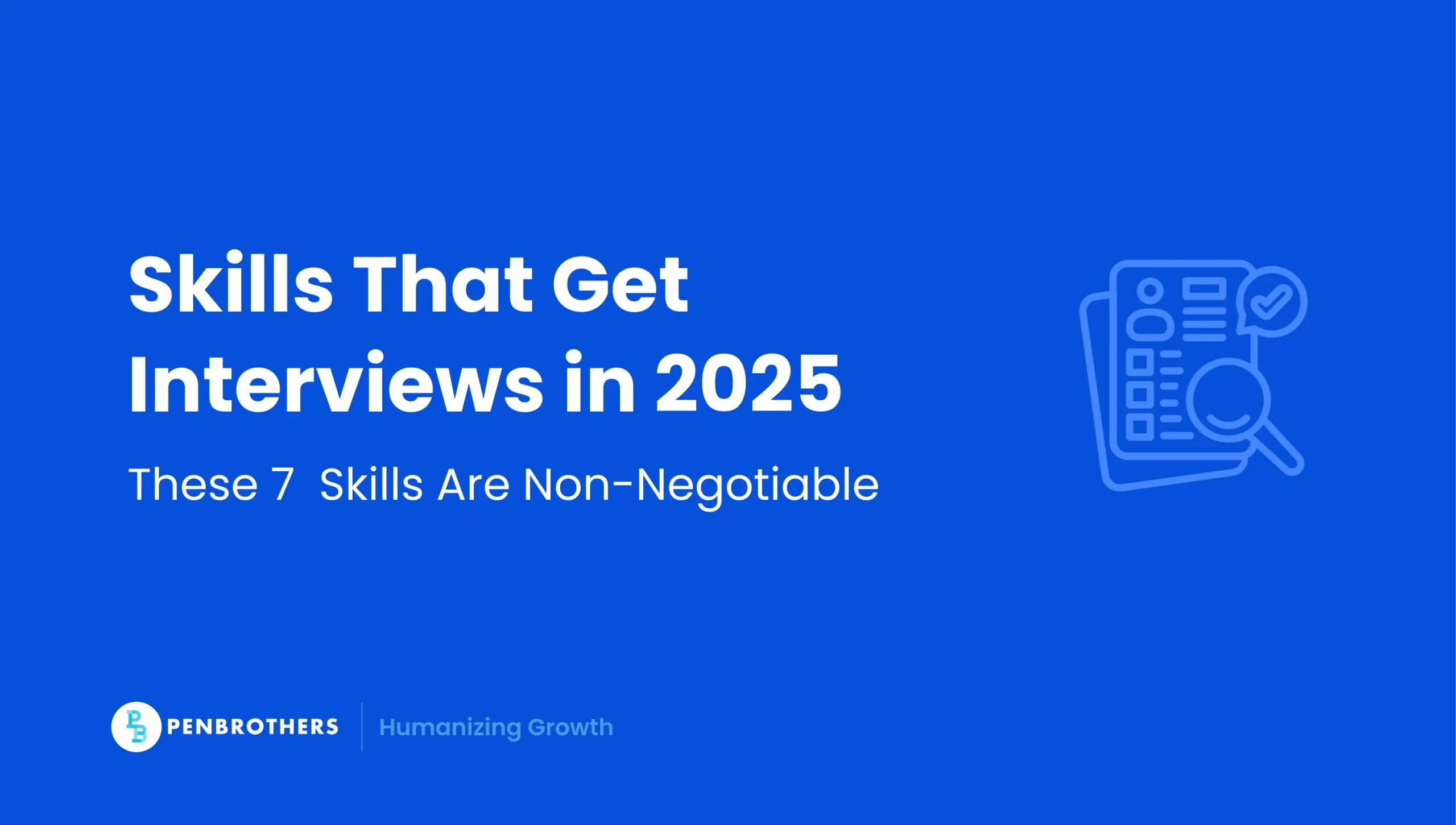What's Inside?
Ask Candidates These 15 Data Analyst Interview Questions

The Adastra 2024 Data Professionals Market Survey Forecast noted that 85% of respondents will spend more on data analytics this year. Because of this trend, 76% of data professionals in the United States predict a continued shortage of data analysts.
You may need data professionals just like many other businesses today. How do you fill the position? Moreover, how do you find the right data analyst who will inform your decision-making with accurate insights? It is challenging to find a data analyst today, much less the one most fit for your organization.
Nonetheless, you can still attract talent and sift through candidates. With relevant questions that reveal different experiences, expertise, and skills, you may identify the best data analyst for your company.
What Is a Data Analyst?
A data analyst is a data expert who interprets thousands of data and produces accurate and relevant insights. The data will be based on key metrics set and collected by the company. The data analyst then evaluates the gathered information and helps you understand what the data means.
Insights may relate to marketing, products, sales, service quality, and many others. These insights are valuable because they tell you what you are doing well and what you can improve. Leaders in the company may then exercise better decision-making based on accurate, relevant insights.
For example, if you want to understand the performance of a product or service, a data analyst will take all the information you have on key metrics. He or she will then interpret the information and tell you if the product or service is popular. Is it attracting or producing buzz? Based on customer feedback, do you have a quality product or service?
Based on these insights and many others, you can make a better decision on how to move forward with your product or service. You can upgrade your marketing. You can ensure adequate inventory. You can improve the quality. Whatever your decision, it will come out of the insights data analysts provide.
15 Data Analyst Interview Questions and Answers:
Common data analyst interview questions may help you find a talented professional. However, you also need specific ones to dig deeper into the candidate’s expertise.
Your questions must also be anchored on your company’s needs, which vary depending on your location or circumstances. For example, data analyst interview questions for UK businesses will differ from questions for US businesses.
The questions below will have sample answers. The purposes of the queries, as well as what you need to evaluate in the candidate’s answers, are included. You will then learn if they are preliminary or follow-up questions.
Initial Screen
1. What is your experience in data analysis?
Why Ask This: To evaluate the candidate’s background as a data analyst
What to Look For: Descriptions of specific data projects and the responsibilities carried by the candidate
What This Is: Preliminary
Sample Answer: “At my prior engagement, I held the role of analyzing sales data and customer feedback. I looked at data to identify insights on product design and functionality. The insights informed our product team on what to retain and what to be improved.”
2. How would you ensure effective communication, whether in person or a remote setting, with the rest of your teammates?
Why Ask This: To evaluate the skill of simplifying and summarizing information
What to Look For: Ability to use effective charts, graphs, and other visual aids to communicate information or insights to team members
What This Is: Preliminary
Sample Answer: “I would create a line chart to illustrate the rise and fall of sales statistics regarding the company’s products through the different sales channels. I would also include the sales information of competing products to gauge our performance.”
3. What statistical knowledge do you have?
Why Ask This: To check the general statistical knowledge of the candidate
What to Look For: Basic or advanced concepts in statistics
What This Is: Preliminary
Sample Answer: “With my previous clients, I have utilized different statistical techniques such as variance, regression, standard deviation, and sample sizing.”
4. What is the meaning of the SQL term ___?
Why Ask This: To check the depth of knowledge in the current dominant data language, SQL
What to Look For: Precise descriptions or definitions of SQL terms
What This Is: Preliminary
Tip: Investigate the depth of knowledge in SQL with terms like index, cursor, clustered index, DBMS, or RDMBS.
Sample Answer: “A cursor is a data access object that’s used to iterate over the number of rows in a table. It can also be used to insert new rows into it.”
5. What are the statistical analysis tools that you have used? What are your essentials?
Why Ask This: To assess software experience
What to Look For: References to business intelligence tools like SPSS or SAS, and mentions of statistical software such as MySQL or Excel
What This Is: Preliminary
Sample Answer: “I have used Microsoft Excel extensively to manage the datasets involved in projects I handled. I classify the data into separate spreadsheets, with cross-reference functionality for easier navigation and data retrieval.”
Secondary Screen
6. What was the most complex data project you worked on?
Why Ask This: To assess the level of experience and skill of the candidate
What to Look For: The extent of the candidate’s role in the project, any challenges faced, and the process employed by the candidate to deliver results
What This Is: Preliminary
Sample Answer: “I was assigned to analyze a big data set involving multiple variables and factors. Classifying and arranging large amounts of data was one of the primary challenges. However, with the use of available tools and smart technology, all the data were eventually structured logically. I interpreted the data using charts and graphs for faster analysis and easy comprehension.”
7. What is big data?
Why Ask This: To check the basic knowledge of the candidate
What to Look For: A short, concise definition of big data
What This Is: Follow-Up
Sample Answer: “Big data refers to large amounts of data that may come from any heterogeneous source. The data may be structured, semi-structured, or completely unstructured. The data must be thoroughly managed to produce actionable information or insights.”
8. How do you define ____?
Why Ask This: To gauge the depth of statistical knowledge
What to Look For: Thorough definitions of more specific statistical knowledge
What This Is: Follow-Up
Tip: Use basic data analysis terms such as clustering, outliers, statistical model, or normal distribution.
Sample Answer: “A statistical model is the means of applying statistical analysis on a given dataset. The statistical model functions as a mathematical representation of the dataset.”
9. What are the differences between ____?
Why Ask This: To assess the depth of statistical knowledge and analytical skills
What to Look For: Clear differentiation between statistical concepts
What This Is: Follow-Up
Tip: Ask about contrasting data analysis terms like quantitative and qualitative data, variance and covariance, or data profiling, and data mining.
Sample Answer: “Quantitative data analysis looks at numbers, employing more mathematical concepts. On the other hand, qualitative data analysis looks at more intangible properties such as characteristics and opinions, yet they can be just as precise as quantitative data analysis using the right techniques.”
10. What are the differences between left join, right join, inner join, and outer join?
Why Ask This: To evaluate the extent of skill in data management
What to Look For: Simple comparison of the functions
What This Is: Follow-Up
Sample Answer: “A left join would return all the data from the left table and the matched data from the right table. A right join is vice versa. An inner join retrieves data that match between both tables and an outer join is when all records are returned if there are matches in either the left or right tables.”
11. What are the most advanced Excel functions you know?
Why Ask This: To evaluate the extent of skill in data management
What to Look For: Specific data management functions such as VLOOKUP, HLOOKUP, INDEX, and others
What This Is: Follow-Up
Sample Answer: “VLOOKUP or HLOOKUP are Excel functions that retrieve data by searching a column or a row in a table. I’ve used these functions in previous engagements and utilize them regularly as part of my process.”
12. What is your process for data analysis like?
Why Ask This: To draw a picture of the candidate’s methodology and project management skills
What to Look For: A clear structure from project start to project finish and must include data cleaning, exploratory data analysis, hypothesis testing, and findings presentation
What This Is: Preliminary
Sample Answer: “At the start of the project, I make sure that my datasets are as complete as possible. I go through data cleaning next. If any data is missing, I proceed with exploratory data analysis for initial insights into the dataset. Once I have more information, I apply more analytical techniques such as regression or clustering. Finally, the findings I obtain are prepared for presentation to the stakeholders.”
13. What is data cleaning and how do you do it?
Why Ask This: To assess the data management skill and problem-solving of the candidate
What to Look For: A clear description of how to process missing data, duplicates, outliers, and others
What This Is: Follow-Up
Sample Answer: “Data cleaning takes up most of the data analysis process. It prepares the data by addressing missing links, duplicated entries, and other inconsistencies that may exist in the dataset. In the beginning, I learn about the nature and pattern of the missing data. Random missingness brings the need to use imputation techniques, but not random missingness means that I only have to consider excluding incomplete data points in my overall analysis.”
14. What are some best practices for data cleaning?
Why Ask This: To gauge the skill level in data management and critical thinking
What to Look For: Practical insights such as sorting data based on varying attributes or breaking down a big dataset
What This Is: Follow-Up
Sample Answer: “I first have to establish the data quality standards that are relevant to the project. Once I have my standards, if the dataset is huge, I set my parameters for automated data cleaning, covering variables that can be removed from the dataset.”
Final Screening
15. How would you go about measuring the performance of our company?
Why Ask This: To check if the candidate performed prior research and has a good understanding of the company
What to Look For: References to the goals, values, and unique circumstances of the company
What This Is: Preliminary
Sample Answer: “With the values and goals that your company has, your sales in the past year have shown considerable growth. Engagement with your market is high. After sales feedback is also positive. If you stick with the drivers that brought you success in the past year, you will be on track for an even better year ahead.”
Quick Bonus: Use 5 More Interview Questions for Soft Skills, Values, and Other Non-Technical Essentials
Beyond the analytical skill interview questions, statistics interview questions, and excel interview questions for data analysts, you also have to ask questions about soft skills, leadership and values that align with your company.
1. How would you deal with a challenge that seems too difficult to face on your own?
Why Ask This: To check the ability to work in a team and has humility
What to Look For: A willingness to ask for help and to work in a group
What This Is: Preliminary
When to Ask This: Final Screen
2. How would you describe yourself as a worker?
Why Ask This: To check both independence as well as team loyalty
What to Look For: Confidence in working alone and humility to work in a group
What This Is: Follow-Up
When to Ask This: Final Screen
3. What made you choose data analysis as a career?
Why Ask This: To assess the passion of the candidate
What to Look For: Genuine interest in data analysis and statistics, specific examples of what fascinates the candidate, and up-to-date information about trends and relevant technologies like AI
What This Is: Preliminary
When to Ask This: Final Screen
4. Where do you see yourself in five/ten years?
Why Ask This: To evaluate the ambition of the candidate
What to Look For: Specific goals of the worker that you can use to cultivate growth opportunities
What This Is: Follow-Up
When to Ask This: Final Screen
5. What attracted you to our company?
Why Ask This: To assess the values of the candidate and if they match with your organizational principles
What to Look For: Specific characteristics and qualities that the candidate associated with the company
What This Is: Follow-Up
When to Ask This: Final Screen
Find the Best Data Analyst for Your Team
Now that you have the questions you need to identify the person for the job, you just have to find the candidates for your open role. Offshoring is a strong talent source to address the talent gap and get you data analyst candidates.
IT support is one of the most commonly outsourced jobs to the Philippines. IT graduates, which the country has in droves, have basic knowledge of data analysis. These are the talent you need to attract.
Many companies are outsourcing to the Philippines. Different US, UK, and Australian companies are outsourcing their roles to remote Philippine workers, so an offshore Filipino team may be the team you need.
Remote Filipino data analysts fill the shoes of any other data analyst out there. Yet they offer more value by espousing kapwa-tao. It is a Filipino value that prioritizes being at peace with everyone facilitating good communication and teamwork.
An offshore Filipino data analyst may also bring your company as much as 50% cost savings. Check out the table below and a salary calculator to see the difference.
| US Total Costs | Philippines Total Costs | |
| Data Entry | USD 42,000 | USD 19,300 |
| Data Engineer | USD 105,000 | USD 69,800 |
Hire the Best Talent with Offshore Data Analysts
You have everything you need to attract talent and find the best data analyst for your company. Consider offshoring as a viable solution for your talent needs. You can enjoy the skills and values that Filipino workers bring, as well as the low labor costs from hiring a remote Filipino worker. Save as much as half your usual costs for a data professional.
Data analysts are valuable members of a company. They perform integral functions that propel organizational progress toward goals or targets. By hiring offshore data analysts, you fill in such an important position in your company.




